Patients of hereditary angioedema gathered in Libya
Genetic angioedema in Libya is a local group of patients and caregivers, as this group strives to help implement internationally recognized treatment principles and to help access and restore modern treatments for patients with hereditary angioedema, which is a rare and deadly condition caused by a deficiency in the inhibitor Q1
.HAEi Genetic angioedema in Libya is a member of the Global Genetic Edema group
It is the comprehensive international organization of groups of hereditary edema patients worldwide. The organization is a global, non-profit network of patient societies that raises awareness and edema for patients, caregivers, physicians, and other stakeholders worldwide.
Feel free to register with us to get more information from local and international bulletins, as well as news of clinical activities for upcoming studies
!you are not alone
تجمع مرضى وذمة وعائية وراثية في ليبيا
الوذمة الوراثية الوعائية في ليبيا هي مجموعة محلية من المرضى ومقدمي الرعاية ، حيث تسعى هذه المجموعة جاهدة للمساعدة في تنفيذ مبادئ العلاج المعترف بها دوليا وللمساعدة في الوصول واستعادة العلاجات الحديثة للمرضى الذين يعانون من وذمة وعائية وراثية ، وهي حالة نادرة ومميتة بسبب نقص في المانع Q1
.HAEi الوذمة الوعائية الوراثية في ليبيا هي عضو في مجموعة الوذمة الوراثية العالمية
إنها المنظمة الدولية الشاملة لمجموعات مرضى الوذمة الوراثية في جميع أنحاء العالم. المنظمة عبارة عن شبكة عالمية غير ربحية من جمعيات المرضى تزيد من الوعي وذمة للمرضى ومقدمي الرعاية والأطباء وأصحاب المصلحة الآخرين في جميع أنحاء العالم.
لا تتردد في التسجيل معنا للحصول على مزيد من المعلومات من النشرات المحلية والدولية ، وكذلك أخبار الأنشطة السريرية للدراسات القادمة
!انت لست وحدك

What is HAE? / ما هو HAE؟
HEREDITARY ANGIOEDEMA (HAE) IS A VERY RARE AND POTENTIALLY LIFE-THREATENING GENETIC CONDITION THAT OCCURS IN ABOUT 1 IN 10,000 TO 1 IN 50,000 PEOPLE.
HAE symptoms include episodes of edema (swelling) in various body parts including the hands, feet, face and airway. In addition, patients often have bouts of excruciating abdominal pain, nausea and vomiting that is caused by swelling in the intestinal wall. Airway swelling is particularly dangerous and can lead to death by asphyxiation.
HAE patients have a defect in the gene that controls a blood protein called C1 Inhibitor. The genetic defect results in production of either inadequate or non-functioning C1-Inhibitor protein.
Normal C1-Inhibitor helps to regulate the complex biochemical interactions of blood-based systems involved in disease fighting, inflammatory response and coagulation.
Because defective C1-Inhibitor does not adequately perform its regulatory function, a biochemical imbalance can occur and produce unwanted peptides that induce the capillaries to release fluids into surrounding tissue, thereby causing edema.
IT RUNS IN THE FAMILY
HAE is called hereditary because the genetic defect is passed on in families.
A child has a 50 percent possibility of inheriting this disease if one of the parents has it. The absence of family history does not rule out the HAE diagnosis, however.
Scientists report that as many as 20 percent of HAE cases result from patients who had a spontaneous mutation of the C1-Inhibitor gene at conception. Consequently, these patients can pass the defective gene to their offspring.
Because the disease is very rare, it is not uncommon for patients to remain undiagnosed for many years.
A large number of patients report that their frequent and severe abdominal pain was inappropriately diagnosed as psychosomatic, resulting in referral for psychiatric evaluation.
Unnecessary exploratory surgery has been performed on patients experiencing gastrointestinal edema, because abdominal HAE attacks mimic a surgical abdomen.
Before therapy became available, the mortality rate for airway obstruction was reportedly as high as 30 percent.
الوذمة الوعائية الوراثية هي حالة نادرة جدًا وذات تأثير مهدد للحياة سببه خلل جيني يحدث في حوالي 1 من كل 10،000 إلى 1 من كل 50.000 شخص.
من أعراض الوذمة الوعئية الوراثية: تورم في أجزاء الجسم المختلفة بما في ذلك اليدين والقدمين والوجه والمجرى الهوائي. بالإضافة إلى ذلك ، غالبًا ما يعاني المرضى من نوبات من آلام البطن والغثيان والقيء الناجم
.عن التورم في جدار الأمعاء
.يعد تورم مجرى الهواء خطيرًا جدًا وقد يؤدي إلى الوفاة بسبب الاختناق
يعد الخلل الوراثي في الجين المتحكم في البروتين الدموي المسمى مثبط س1 من أسباب الوذمة الوعائية الوراثي
1ينتج عن هذا الخلل الوراثي إنتاج غير كافٍ أو غير فعال لبروتين مثبط س
.يساعد هذا البروتين المثبط الطبيعي في تنظيم التفاعلات الكيميائية الحيوية المعقدة للأنظمة في الدم والتي تشارك في مكافحة الأمراض والاستجابة الالتهابية والتخثر
ونظرًا لأن المثبطات المعيبة لا تؤدي وظيفتها التنظيمية بشكل كاف ، يمكن أن يحدث خلل في الكيمياء الحيوية وينتج الببتيدات غير المرغوب فيها التي تحفز الشعيرات الدموية على إطلاق السوائل في الأنسجة المحيطة ، مما يسبب الوذمة “الورم
شيء معتاد في العائلة
تعد الوذمة الوعائية من هذا النوع مرض وراثي لأن العيب ينتقل في الأسرة وراثيا. فان كان أحد من الوالدين لديه المرض, فهناك احتمال بنسبة 50٪ ان يولد الجنين مصابًا به. ومع ذلك ، لا يستبعد غياب تاريخ العائلة
.لتشخيص الوذمة الوعائية الوراثية
يفيد العلماء أن ما يصل إلى 20 بالمائة من الحالات ناتجة عن خلل تلقائي في الجين المتحكم بالمثبط سي 1 عند الحمل. وبالتالي ، يمكن لهؤلاء المرضى تمرير الجين المعيب إلى ذريتهم. كما أن هناك انواع من الوذمة
. الوعائية الوراثية لها اسباب اخرى ناتجة عن اصابة جينات اخرى و هناك انواع لم يتوصل العلم للكشف عن الجين المسبب
لأن المرض نادر للغاية ، فليس من غير المألوف أن يبقى المرضى دون تشخيص لسنوات عديدة. كما أفاد عدد كبير من المرضى أن ألم البطن المتكرر والشديد قد تم تشخيصه بشكل غير لائق على أنه نفساني ، مما أدى
.إلى إحالة للتقييم النفسي, أو تم إجراء جراحة استكشافية لا لزوم لها على المرضى الذين يعانون من الوذمة المعدية المعوية ، لأن هجمات المرض في البطن تحاكي البطن الجراحي الحرج
.قبل توفر العلاج ، كان معدل الوفيات بسبب انسداد مجرى الهواء يصل إلى 30 في المئة
لقد أدى التقدم في العلم الى الوصول الى فحوصات طبية يسيطة و غير مكلفة للوصول لتشخيص المرض و كذلك الى الوصول الى خيارات علاجية متعددة ساعدت المرضى المصابين بهذا المرض للعودة لحياتهم و
.ممارسة أنشطتهم الاعتيادية اليومية بحرية

